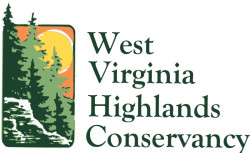Longwall Mining
Longwall mining is a form of underground coal mining that allows industry to mine massive blocks of coal more efficiently and with fewer miners than previous mining methods. Once done with pick and shovel and mules, underground coal mining progressed to using machines that could extract more coal at a faster rate of production. Until the past 50 years or so much of that conventional mining left large pillars of coal in the ground to support the surface and protect homes above. Subsidence was always a possibility as the remaining pillars of coal would deteriorate, but it was often delayed for decades if it happened at all.
In a quest to extract a greater percentage of the underground coal, companies began shaving off and even taking out the supporting pillars as the miners ‘retreated’ to the surface. Over the years, technology advanced to the point where today companies that can afford the initial investment in equipment are able to extract entire blocks of coal 1,000 – 1,500 feet wide and a mile or two long. Removing such large blocks of coal 5or 6 feet high with no support left to hold up the surface results in what the industry refers to as “planned subsidence”.
Promoted as a more predictable, more controlled, and more quickly finished type of subsidence the actual experience is often far more severe and the subsided ground continues to move and settle for months if not years. Homes and outbuildings on the edge of the longwall panel suffer the most damage, but structures in the middle of the panel will drop several feet and foundations and chimneys are permanently damaged. Streams and wells are often lost or depleted; springs may disappear from one property and reappear elsewhere or not at all.
Longwall mining is done throughout state of West Virginia and accounts for a large percentage of the coal produced in the state in any given year.
According to the Office of Surface Mining Reclamation and Enforcement’s latest Annual Evaluation Report for West Virginia the state led the nation in underground coal production in 2014. “Twenty three percent of the Nation’s underground coal production comes from West Virginia. Underground mines produce approximately 75 percent of the State’s total coal production. … With twelve longwall mines operating the State, West Virginia had more longwall mining operations than any other State in 2014. … Longwall mining operations accounted for 57.9 percent of the State’s underground coal production and 43.6 percent of the State’s total coal production in 2014. … Longwall mining has become the predominate method of underground coal production in West Virginia and the Nation.”
West Virginia Highlands Conservancy works with members who live over the 6,000 acre Leer Longwall Mine to the east of Tygart Lake, Dam and State Park near Grafton, WV. When Arch Coal/Tygart Valley Coal initially applied for their permits the Taylor County community group TEAM protested the permits because of its proximity to the Tygart Lake and Dam, the potential for subsidence damage to their homes and farms and water supplies, the potential for long term pollution from the slurry impoundment and from water that will fill the mined out area once mining is complete. Unsuccessful in their initial challenges TEAM continues to monitor the operation and comment on expansions and other actions by the company.
West Virginia Highlands Conservancy has accompanied TEAM and others on site visits to the operations, attended informational meetings with the company and WVDEP, commented on proposed permit changes, successfully having one ventilation shaft moved further away from the Lake, State Park, and locally owned summer resort community. We work with and have engaged the Morgantown consulting group Downstream Strategies to conduct water testing with TEAM. We cooperate with the local watershed group Save the Tygart, and have provided local citizens with informational material.
Already subsidence has damaged homes, depleted several ponds and springs, and drainage from the slurry cell is impacting at least one stream in the area.
Arch Coal also has permits for two additional mines on the west side of Tygart Lake, so it’s going to be a long haul.
Links
Center for Coalfield Justice
CCC/Longwall Project
Downstream Strategies
Save the Tygart
Mountain Watershed Association
CALM
